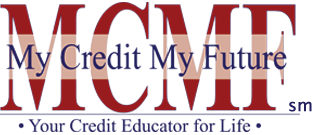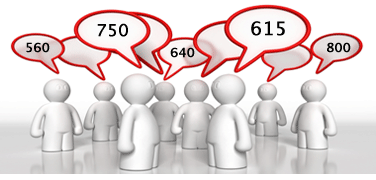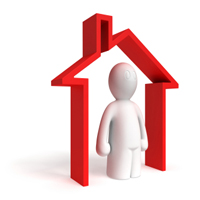

- Credit 101
- Teaching Tools
- Scores
- Life Stages
- Credit Mishaps
- Understanding Different Bankruptcy Chapters
- Your Credit Report After a Bankruptcy
- Understanding Judgments
- Inaccuracies on Your Credit Report
- Disputing Credit Report Errors
- Understanding Foreclosure
- The Foreclosure Process & What To Do Afterwards
- Understanding Identity Theft
- In the event of: The Death of a Spouse
- Rebuilding Your Credit
- Choosing a Reputable Credit Counselor
- Avoid the Downside of Credit Mismanagement
- What is a Credit Freeze
- Worksheets & Letters
- 6 Steps to Creating a Budget
- Household Budget: Wants vs Needs
- Personal Budget Template
- Understanding Amortization Schedules
- Loan Amortization Calculator
- Sample Opt-Out Letter
- Sample Dispute Letter
- Annual Credit Report Request Form
- Auto Loan Payment Calculator
- Back-to-School Budgeting
- Cost of Credit
- Emergency Fund
- How Much Car Can You Afford
- How Much House Can You Afford
- How Much Will College Cost
- How Much Will My Loan Cost
- How Will My Savings Grow
- Mortgage Payment
- Mortgage Refinancing
- Pay Down Debt or Invest
- Repaying Student Loans
- Retirement Fund
- Rework Your Budget
- Saving for a Goal
- Should I Consolidate My Debt
- Travel Budgeting
- Your Holiday Budget
- Buying a House
- 5 Steps to Buying a Home
- 5 C's of credit When Applying for a Loan
- What Score is Needed to Purchase a Home
- Using a Realtor
- Understanding Fixed Rate Mortgages
- Understanding FHA Loans
- Understanding VA Loans
- Understanding Interest Only Loans
- Understanding ARM Loans
- Understanding Combo Loans
- Understanding Streamline K Loans
- Understanding Bridge Loans
- Understanding HELOC (Home Equity Line of Credit)
- Understanding Reverse Mortgages
- Basic Mortgage Underwriting Principles
- Credit & Financial Law
- Home

5 C's of Credit When Applying for a Loan
What Score Is Needed to Purchase a Home
Understanding Fixed Rate Mortgages
Understanding Interest Only Loans
Understanding Streamline K Loans
Understanding HELOC (Home Equity Line of Credit)

Understanding ARM Loans
Top Three Types of Adjustable Rate Mortgage Loan Products
- 5/1 ARM loans
Payments are fixed for five years and adjust for remaining 25 years. - 3/1 ARM loans
Payments are fixed for three years and adjust for remaining 27 years. - 2/1 ARM loans
Payments are fixed for two years and adjust for remaining 28 years.
First Payment Adjustment
Bear in mind that your initial rate has little to do with rate increases; it's simply a start rate. It's not tied to an index. It's the index plus margin that equals your new payment upon adjustment. When your first adjustment rolls around, many loans allow a higher increase than for subsequent adjustments. Some can jump to the maximum cap rate, which could be as much as another 5 to 6 percent.
Let's say you borrowed $300,000 at an initial rate of 4% and pay $1,432.25 per month for principal and interest. If your rate moved to 6.5%, your payment would increase to $1,896.20, or about $464 more a month. If your rate moved to 9%, your payment would be $2,413.86, or a difference of an additional $982 a month. Short of taking on a second or third job, few borrowers can afford such drastic jumps in monthly payments. So what can you do?
Available Options
- Refinance to a Fixed-Rate Mortgage
- This option is feasible if you have enough equity and can afford higher payments.
- If homes prices fall and appreciation declines, you might not have any equity.
- Beware of prepayment penalties; some equal six-months of unearned interest.
- Adding refinance costs and points to the loan further reduces equity because your loan balance increases.
- Talk to a Reputable Credit Counselor
- Arrange to make lower payments, deferring unpaid interest, which will increase your loan balance.
- Work out lower payments on other debt obligations to allow for higher mortgage payments, called debt reorganization under bankruptcy laws.
- Persuade the lender to come to an agreement on forbearance or postponing your payment increases based on ability to pay at a future date.
- Sell Your House
- List your house for sale with a real estate agent, providing you have enough equity to pay commissions and costs of sale, typically 7 to 10 percent of sales price.
- Sell your house without representation, providing you can afford advertising and marketing expenses, including the advice of a real estate lawyer.
- Deed your house to the lender under a deed-in-lieu-of-foreclosure arrangement, accepting that you will receive no money for your equity and a ding on your credit.
Foreclosure, of course, is always an option, but it's not the most desirable. Especially when there are better alternatives available. The worst thing a home owner can do is nothing
